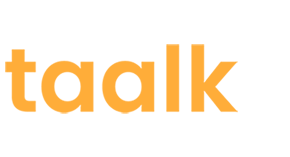Beyond the To-Do List: How ADHD Planner is Engineering Digital Dopamine for the ADHD Brain
The productivity app market is vast, but most tools are designed for the neurotypical mind—rigid lists, complex workflows, and static structures that often lead to system burnout and, for an adult with ADHD, increased procrastination and frustration. The struggle is not knowing what to do, but overcoming the executive function barrier to doing it.
ADHD Planner is a specialized digital planning tool for adults with ADHD built on a foundational insight: to help with focus and follow-through, a planner must be engineered to work with the unique neurology of the ADHD brain, not against it. By meticulously integrating neuroscience and cognitive behavioral principles (CBT), this app transforms a conventional planner into a system that rewards task initiation and promotes sustainable habits.
This approach is a powerful lesson in niche market domination through scientific specialization, offering a model for how startup founders can find success by serving a hyper-specific, underserved audience with deep, empathetic design.
The Problem: The Failure of Generic Productivity
Adults with ADHD frequently struggle with core executive functions, including time blindness, task initiation, and emotional regulation, which are often compounded by feelings of shame or negative self-talk. Generic productivity apps worsen this:
- Overwhelm from Clutter: Too many features, settings, or blank canvases trigger decision paralysis and task avoidance.
- Lack of Immediate Reward: Completing a task offers little immediate feedback, failing to leverage the dopamine reward pathways crucial for motivation.
- Inflexible Rigidity: Rigid scheduling fails when focus or energy fluctuates, leading to system abandonment—the all-too-common cycle of trying and failing to stick to a planner.
ADHD Planner was engineered to be the counter-solution, offering structure without overwhelm.
The Unique Angle: Neuroscience-Driven Design and CBT Integration
The core principles of the ADHD Planner are rooted in clinically validated approaches like Cognitive Behavioral Therapy (CBT), which focuses on replacing dysfunctional thought patterns with coping strategies and implementation skills.
1. Overcoming Procrastination with Frictionless Initiation
The app incorporates design features that directly address task initiation, the greatest barrier for the ADHD brain:
- Visual Timers and Time Blocking: Transforming the abstract concept of time (time blindness) into concrete, manageable visual blocks to aid awareness and focus.
- Bite-Sized Task Templates: Reducing the cognitive load of a “blank page” by providing guided structures that automatically break down overwhelming projects into smaller, achievable steps.
- Gamification & Instant Feedback: Implementing instant visual feedback, streaks, or confetti for task completion to provide the immediate dopamine hit needed to reinforce the habit loop and maintain motivation.
2. Building Sustainable Habits through Self-Regulation
CBT and neuroscience highlight the importance of self-regulation and consistent review. The app likely includes elements that encourage guided learning paths and reflection:
- Routine Flexibility: Unlike rigid schedules, the app offers the necessary flexibility to adjust routines on the fly based on current energy levels or motivation, preventing the all-or-nothing thinking that leads to abandonment.
- Reflection Prompts: Integrating short, digestible review or journaling prompts to encourage users to track their mood, energy, and what worked, reinforcing the CBT goal of identifying and adjusting personal coping strategies.
By weaving these science-backed mechanisms into the digital interface, ADHD Planner is becoming an essential “external brain” for its users.
Key Takeaways for Founders in Digital Health
- Specialization is Defensible: In the crowded app market, ADHD Planner carved out its niche by being explicitly for adults with ADHD, not just usable by them. This specialization creates a strong, loyal, and highly motivated user base.
- Productize Clinical Principles: The explicit mention of “neuroscience and cognitive behavioral principles” lends immediate credibility and authority, attracting users who have exhausted generic solutions and are seeking evidence-based tools.
- Embrace Empathetic Design: The founding insight—building for “brains like mine”—is a powerful narrative that fosters deep community trust and drives word-of-mouth growth.
- The New Productivity Metric is Follow-Through: For this audience, the metric of success is not tasks completed, but sustainable habit building and overcoming the core issue of procrastination. Founders should frame their value around the specific psychological block they are lifting.
ADHD Planner is proving that the most effective productivity tools are those engineered with an intimate understanding of the brain they are trying to assist.
Are you a startup founder or innovator with a story to tell? We want to hear from you! Submit Your Startup to be featured on Taalk.com.








